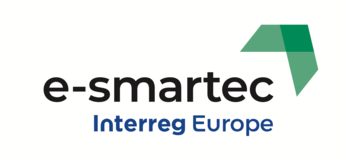For the first Living Lab for Lazio Region, Rome Mobility Agency and Link Campus University have involved a group of Mobility Managers of both public and private firms/companies that have already started smart-working, as well as representatives of the Mobility Department of the City of Rome.
How did it go?
An open discussion took place to get information on driver, barriers and procedures to catch up with smart-working at a city level.
During the discussion, participants highlighted that employers should have good communication with and trust in their staff to achieve good results when smart-working, since the strategy requires a high level of engagement and commitment of all parts involved. Especially when considering Italian work culture, we can say that smart-working requires a complete shift in the corporate environment, moving from a hierarchy that delegates and sets scopes and objective in a systematic way to a more trust-worthy and flecible structure where employees are considered assets and given major operational agency.
When it comes to management, however, monitoring is still essential. In this sense, there must be an information system that allows the measurement of performance and reporting of employees. In a way, clear performance objectives and measures are required, so that employees' flexibility does not affect the company. Behavioural controls such as monitoring online activities, specifying the exact tasks that are to be performed at home and scheduling regular project meetings between employees and supervisors might be helpful additional tools in making smart-working work.
As concerns the impact of smart-working on a more sustainable mobility, the actors recognized that combining smart working with Employee Trip Reduction Programs should well incentive employees to reduce their commuting and match with their willingness to undergo a part-time switch from private automobile transport into other alternatives. Thus, when well implemented with specific programs designed the Mobility Managers, smart-working can contribute to reduce congestion and pollution problems.
The Mobility Managers participating the Living Lab also agreed that the impacts resulting from this strategy could be measured through the vehicle trips or peak period vehicle trips, which are the total number of private vehicles commuting.
Therefore, smart-working can contribute to a trip reduction program that would affect mobility directly. By having the ability to work from home 4 to 5 days per month, the number of trips to the office and parking space requirements would be reduced. The introduction of flexible work time would also reduce the peak hour congestion and the pollution resulting from that. In addition, the different organization of the office space, e.g. having shared desks, is known to bring the employees closer to one another, which might encourage them to carpool.
Outcomes
The most common difficulties for introducing smart-working are the lack of expertise in delivering this new method, as well as the lack of follow up with and guidance of the team that is new to this working strategy. Other difficulties are the need of a change in management and the need of adaptation of proper technology to help with the transition.
As concerns the e-smartec project, smart-working can be considered a triggering strategy to enhance the shift to a more sustainable mobility, but only in combination with specific incentives and the availability of technologies, means and organizational culture to implement such strategy.

